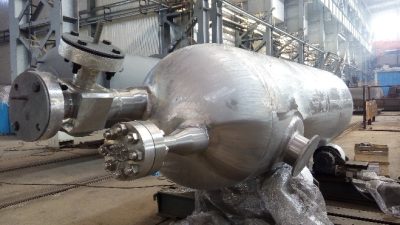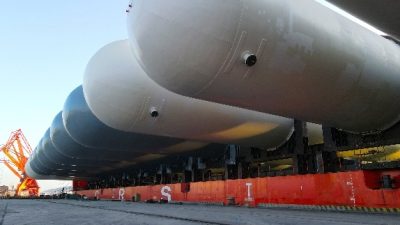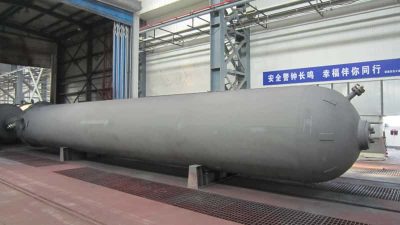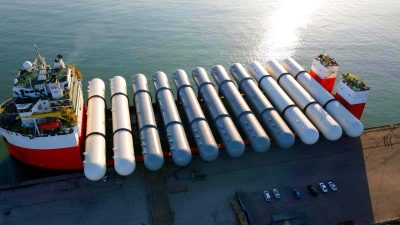Send Email
Call / WhatsApp Anytime
Send Email
Call / WhatsApp Anytime
Liquefied Gas Storage Tanks are specialized pressure vessels designed to safely store gases that become liquid under pressure or low temperature. These tanks are essential in industries such as petrochemical, chemical, energy, and gas distribution, where large volumes of liquefied gases need to be stored, transported, or used in a controlled environment. Common gases include LPG (liquefied petroleum gas), ammonia, chlorine, ethylene, propylene, and CO₂.
These tanks are manufactured in accordance with international pressure vessel codes such as ASME, PED, GB150, or AD2000, and are engineered to withstand internal pressure, thermal expansion, corrosion, and environmental exposure.
Weihai Shidao Heavy Industry (WSHI) designs and manufactures high-performance industrial storage tanks for a wide range of applications involving liquids, gases, chemicals, and cryogenic substances. Built to withstand extreme pressures, corrosive media, and fluctuating temperatures, our storage vessels ensure safe, long-term containment in the most demanding industrial environments.




| Type | Typical Application |
|---|---|
| LPG Storage Tank | Propane/butane storage in energy and fuel systems |
| Liquid Ammonia Tank | Fertilizer and chemical plants (e.g., urea production) |
| Liquid Chlorine Tank | Water treatment and chemical manufacturing |
| Ethylene / Propylene Tank | Petrochemical industry |
| CO₂ Storage Tank | Beverage, welding, and fire suppression |
| Cryogenic Liquid Tank | LNG, LOX, LIN storage for energy and medical use |
Certified Safety, Reliable Quality, Custom-Engineered Pressure Vessels.
— Globally Compliant, Built for Harsh Industrial Conditions.
Liquefied Gas Storage Tanks play a vital role in a wide range of industrial sectors that require safe, high-volume storage of compressed or cryogenic liquefied gases. Their robust construction and pressure-rated design make them suitable for both intermediate storage and end-use delivery of process-critical gases.
1. Petrochemical Industry Used for storing raw materials and intermediates like propylene, ethylene, butane, and isobutane before cracking or polymerization. These tanks are integrated into complex refinery systems to ensure uninterrupted feedstock supply.
2. Fertilizer & Chemical Industry Essential for storing liquid ammonia (NH₃) in urea, nitric acid, and ammonium nitrate production plants. They are also used for chlorine, sulfur dioxide, and other toxic or reactive gases.
3. LPG Distribution & Fuel Applications Widely used in LPG bottling plants, gas stations, and cylinder filling stations to store propane/butane mixtures. Horizontal or underground LPG tanks support both industrial fuel systems and residential heating supply chains.
4. Cryogenic & Refrigeration Industry Cryogenic-grade tanks are designed for low-temperature liquefied gases such as liquid nitrogen (LIN), liquid oxygen (LOX), liquid argon (LAR), and LNG, used in refrigeration, metal processing, and medical oxygen systems.
5. Power Generation Used in gas-fired power plants for storing LPG or LNG as backup or primary fuel sources. They ensure fuel security and reduce dependency on pipeline gas.
6. Food & Beverage Industry CO₂ storage tanks are used in beverage carbonation, food freezing, and packaging. Their hygienic design and precise pressure control support food-grade applications.
7. Water Treatment & Environmental Control Chlorine or sulfur dioxide tanks are deployed in municipal water treatment plants and industrial wastewater treatment, ensuring controlled and safe disinfection.
8. Fire Suppression Systems Liquefied CO₂ or FM-200 tanks are employed in fire suppression systems in data centers, marine vessels, and chemical storage rooms.
A liquefied gas storage tank is a pressure-rated vessel used to store gases that are converted into liquid form under pressure or low temperature, such as LPG, ammonia, or CO₂.
Common types include:
Typical working pressures range from 0.8 MPa to 3.5 MPa, depending on the gas stored and safety requirements. Cryogenic tanks may operate at lower pressures but require insulation.
Carbon steel, stainless steel (SS304, SS316L), low-temperature steel, and duplex stainless steel are commonly used. Material selection depends on gas corrosiveness, pressure, and temperature.
Key selection factors include:
Prices vary by type and size:
Ready to Build Reliable Storage Solutions with WSHI?
Whether you require a high-pressure hydrogen tank, a sanitary-grade pharmaceutical vessel, or a cryogenic LNG storage unit, WSHI offers fully customized solutions engineered for your specific application. Backed by decades of manufacturing expertise, global standard certifications, and a commitment to safety and performance, we are your trusted partner for industrial storage systems.
📩 Contact our engineering team today to discuss your requirements, request a technical proposal, or schedule a consultation.